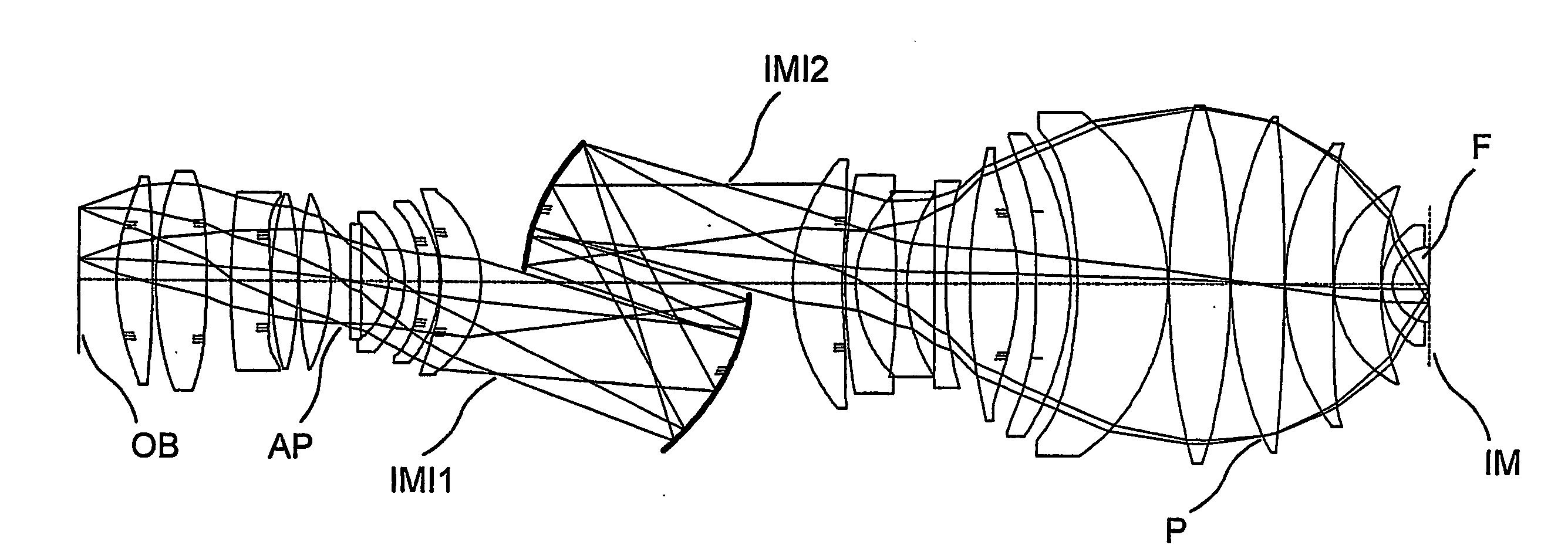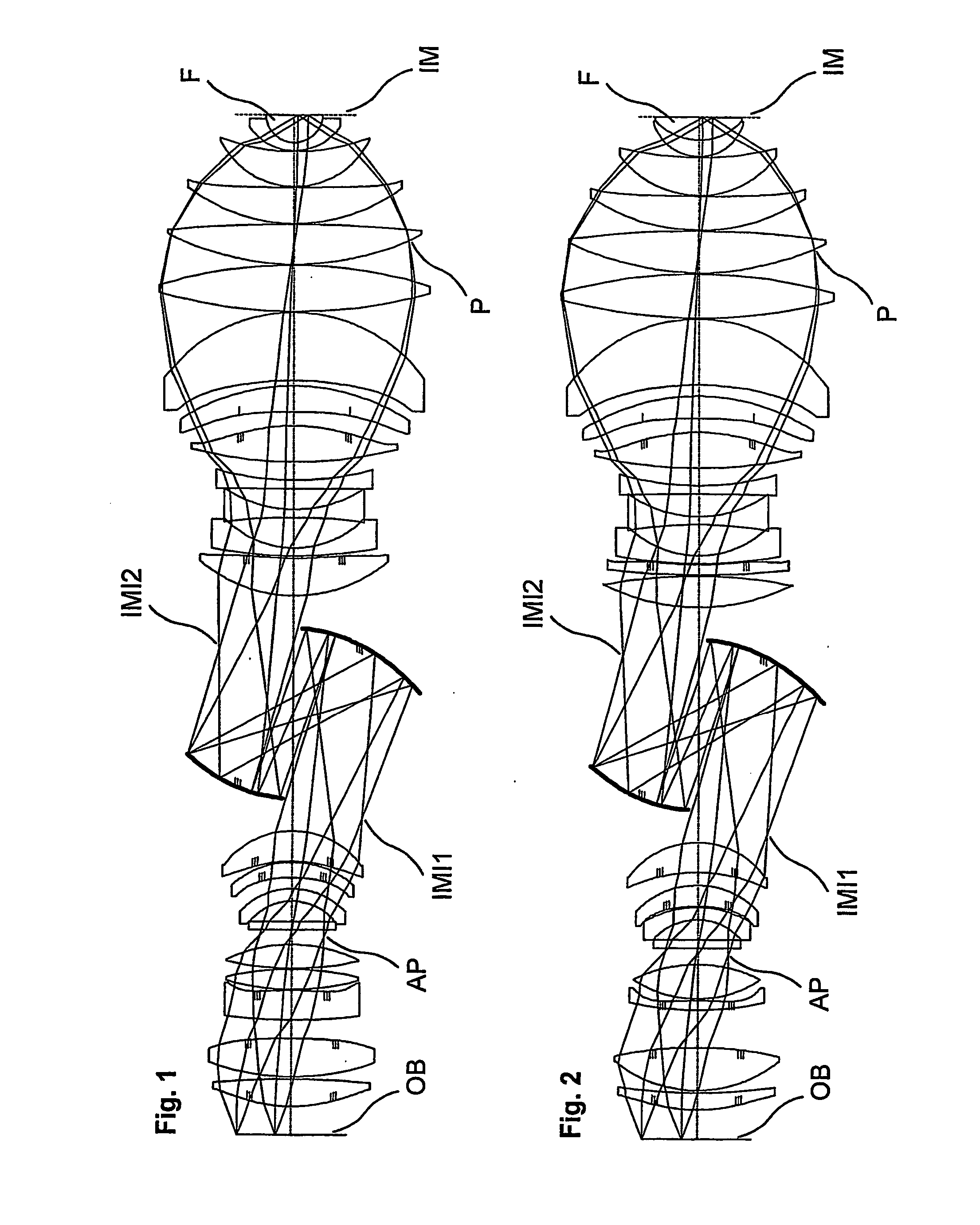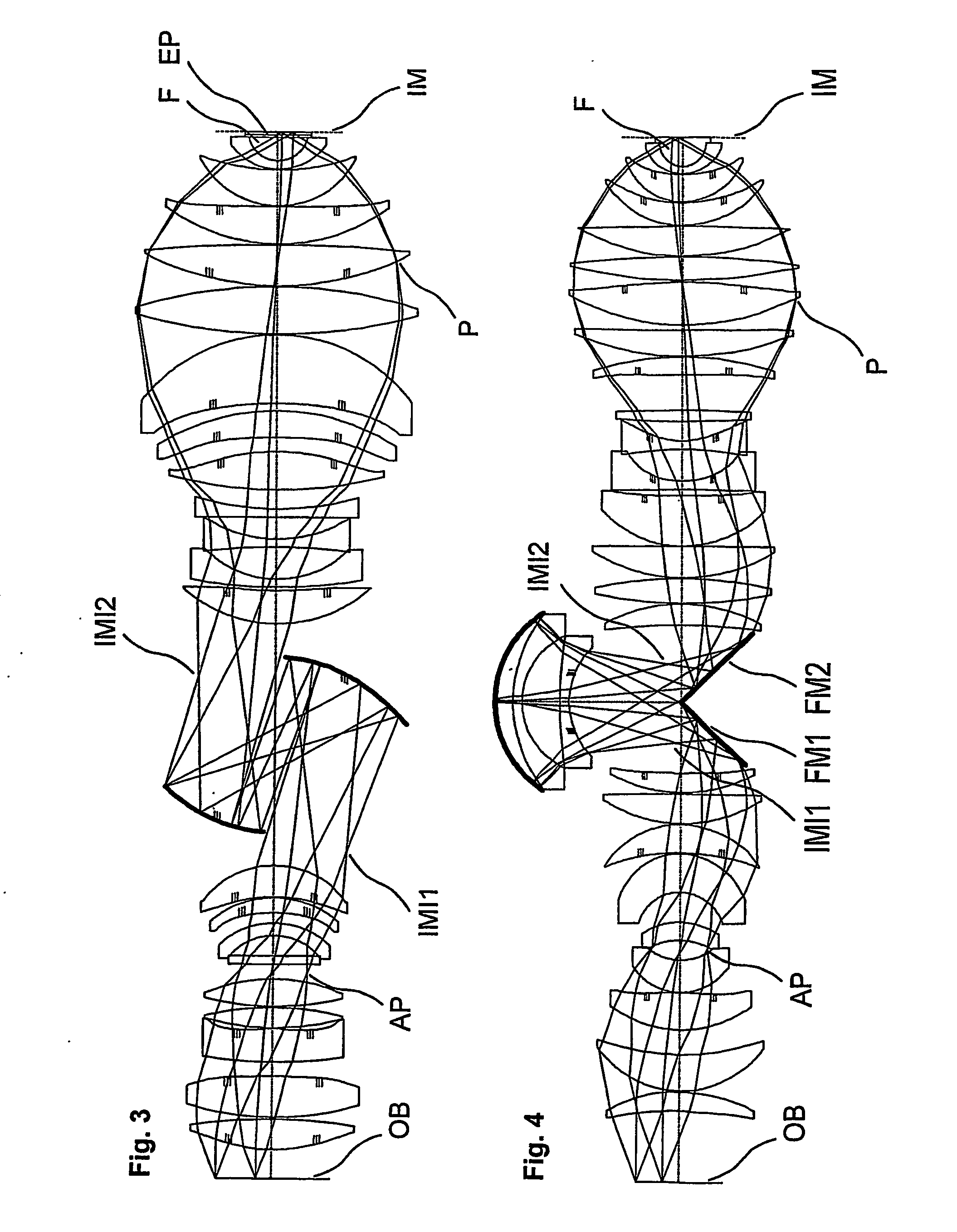Objectives as a microlithography projection objective with at least one liquid lens
a technology of liquid lens and object, applied in the direction of microlithography exposure apparatus, instruments, photomechanical treatment, etc., can solve the problems of limited success and refractive index
- Summary
- Abstract
- Description
- Claims
- Application Information
AI Technical Summary
Benefits of technology
Problems solved by technology
Method used
Image
Examples
Embodiment Construction
[0055] In FIG. 1 to 6 marginal and principal rays are depicted for the object points nearest and furthest from the axis. Aspheric surfaces are marked twice with 3 lines at the contour.
[0056] The optical axis or the axis of symmetry of the curvatures of the surfaces is marked by dots and dashes.
[0057] In each case OB denotes the object plane. This corresponds to the surface (SURF) 0 in the tables. IM denotes the image plane and corresponds in each case to the surface of the highest number in the tables.
[0058] F respectively denotes the liquid lens according to the invention.
[0059] EP denotes an optional end plate.
[0060] IMI1 and IMI2 are the intermediate images.
[0061] AP denotes the position of the system aperture at which an adjustable diaphragm can be arranged and will also be referred to as diaphragm plane.
[0062] P denotes the pupil in an image-side objective part.
[0063] All embodiments shown are designed for the operating wavelength 193.4 nm (ArF Excimer Laser) and reduce...
PUM
 Login to View More
Login to View More Abstract
Description
Claims
Application Information
 Login to View More
Login to View More - R&D
- Intellectual Property
- Life Sciences
- Materials
- Tech Scout
- Unparalleled Data Quality
- Higher Quality Content
- 60% Fewer Hallucinations
Browse by: Latest US Patents, China's latest patents, Technical Efficacy Thesaurus, Application Domain, Technology Topic, Popular Technical Reports.
© 2025 PatSnap. All rights reserved.Legal|Privacy policy|Modern Slavery Act Transparency Statement|Sitemap|About US| Contact US: help@patsnap.com



